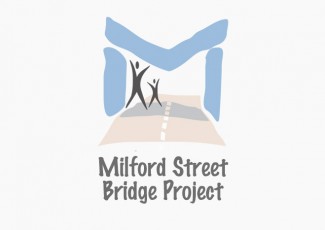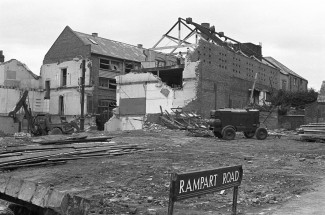Rampart Road : The Final Days
Rita L. Jacob


Change began in the late fifties and early sixties with the construction of Salisbury Technical College and the demolition of houses in the Friary; many of which were sub-standard and beyond viable modernisation. The latter, however, was not true of the properties in Rampart Road, many having been renovated by their tenants. In her interview for the Milford Street Bridge Project, Sue Morrissey speaks about the destruction of beautiful cottages although this is probably a general reference and not specific to Rampart Road:-
‘And the road started and they knocked all these little cottages down and John knocked some of them down and beautiful cottages, people that really spent money and done them up and they were really lovely, little gardens, you know, perfect and they knocked them down to put this road up supposedly to ease congestion in Salisbury’
The plans for Churchill Way initially caused a lot of uncertainty; residents not being sure which properties were scheduled for demolition or loss of land. As a lot of houses were rented, any information may have been sent straight to the landlords, Sue Morrissey commenting:-
‘I don’t ever remember having any, even literature come through about it, I can never remember them, I know there was some talk about having this road built and it was going to be fantastic, there was the road to go from one road to the car park in the centre’
Those who owned their own homes were in a particularly invidious position; knowing that any money they received under a Compulsory Purchase Order would be insufficient to buy a similar property – or one at all! Therefore, once the bulldozers began to roll in, owners and tenants found themselves forced into Council accommodation with a minimal amount of compensation; social housing still carrying a stigma in the 1960s.
Rampart Road became a rather unpleasant place during these last few years; houses being boarded up as they were vacated and demolition work already taking place in St. Ann Street. Some residents were re-homed in the new flats built in Tollgate Road, these being some of the last to leave. Others opted to move to other areas including estates near Victoria Park and in Harnham, Charles Humby describing the effect on the elderly:-
‘Well I regret seeing a lot of them pulled down, especially, the old almshouses because they never replaced ’em, and you see it took people from Rampart Road and stuck them out at Harnham, well its costing people money to come back into the town to what their grocer’s, because there was no shops at Harnham’
People may have been less bitter about losing their homes if they thought the new road would fulfil it’s purpose; the site being controversial even in the sixties. On the other hand, one of the reasons Rampart Road is remembered with affection is that it was destroyed before radical change took place although the latter was gradually creeping in. For, by 1969, some of the elderly residents had either died or moved nearer their children while the younger couples, if they could afford to do so, had sought properties they could actually own! This change in population would have accelerated once landlords began disposing of houses, new tenants probably having no roots in the area and regarding moves as mere steps on the property ladder!



No Comments
Add a comment about this page